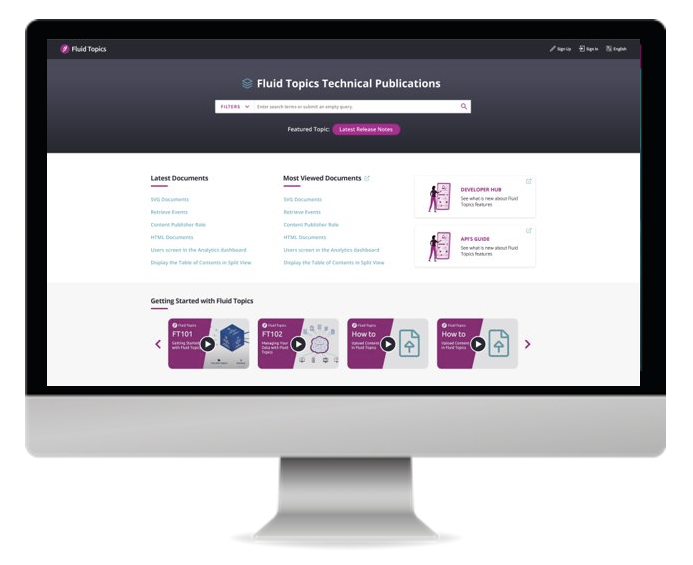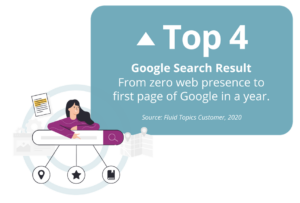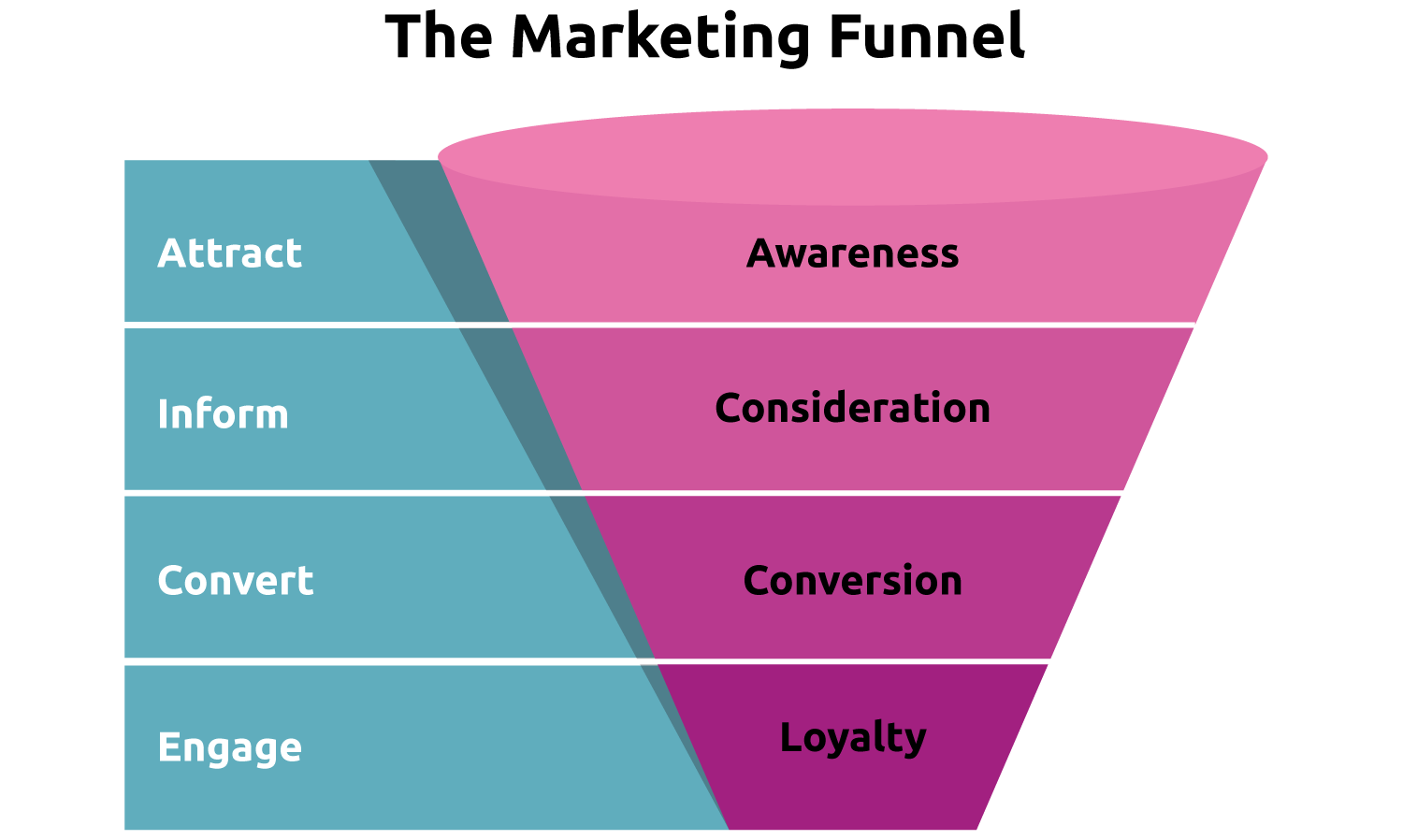Technical documentation and marketing content have always been treated differently. Technical documentation has rarely been seen as collateral that could serve marketing purposes.
A study from market research firm Focus Vision showed that B2B buyers actually read on average, 13 pieces of content before making a purchasing decision. Surprisingly, the most useful types of content to aid purchase decision-making were those that addressed product specifications and functionality (67%). So why is technical content still often playing second fiddle?
Extending product visibility through the exposure of tech content online is a major opportunity for business development that can be achieved without demanding an increased marketing budget. However, most companies don’t fully grasp the value of technical content and how it benefits their business goals.
We’ve highlighted 3 reasons why your marketing team (and your whole business) will love your technical documentation.
Reason #1: Product Branding Value
You’ve probably spent time thinking about how your content impacts potential customers or get them to buy from you. Your content is a great resource that points prospects towards the solution to their pain points at different stages of the marketing funnel.
Marketing materials attract potential customers with datasheets, infographics, videos, especially at the top of the funnel, in the “Awareness” phase. Your technical documentation educates and informs these future customers about your product and is especially useful at the bottom of the funnel. A strong documentation builds trust and credibility with your prospects and when the time comes for them to pull out the checkbooks, they’ll do that without hesitation.
However, in many cases, technical documentation is decoupled from the marketing branding. The content is often massive, composed of large PDF documents, tedious to search and read from, and with a different look and feel than the glossy marketing collateral or website. Additionally, documentation portals are seen as unattractive repositories of content with a terrible user experience. Altogether, it creates confusion for the visitors.
Research from Salesforce found that 75% of customers expect consistency across a brand’s channels, with 73% likely to switch if they don’t get it. Consistency reassures customers and makes them feel more comfortable in their user journey. Consistent designs and branding are vital to creating a customer experience that will engage your prospects and existing clients.
Content Delivery Platforms (CDPs) have emerged to power up technical documentation and create the perfect content experience.
Let’s take Fluid Topics’ CDP as an example. Our solution collects and unifies all types of documentation, no matter the initial source and format. It transforms all your information into granular, unified, digital-ready content and publishes it simultaneously to all your channels, including your Fluid Topics documentation portal.
Fluid Topics enables documentation teams along with their marketing peers to easily tailor this portal with a variety of “drag and drop” components. They can create different types of pages, and customize the color palette, fonts, images, layouts, or other design elements to match the branding requirements. As a result, prospects and customers have access to a familiar knowledge center that serves relevant, targeted, and personalized information. On top of that, Fluid Topics’ CDP can turn your PDFs and any other types of product content into on-demand knowledge, and create a consistent and unified source of guidance, aligned with your corporate website.

Reason #2: The Power of SEO
Search engine optimization or SEO is a term that anyone who has worked in Marketing will be familiar with. It’s the process of getting traffic from free, organic, editorial, or natural search results in search engines. For example, if you go to Google and type in the phrase ‘content delivery platform’, the first or second organic result you should get will be for Antidot, the company that launched Fluid Topics.
Technical documentation portals are a major reserve of relevant content and a real treasure for internet referencing. Marketing teams tend to overlook documentation as a business driver when it can potentially account for a large part of a company’s online traffic.
We’ve recently hosted a great webinar with Beth McFadden, Information Engineering Technology Strategy at Teradata in which she explained how on the basis of their technical content, they applied SEO principles and transformed their portal into the company’s most visited website. Specifically, they spent a lot of time on their content metadata and short descriptions to improve their rankings. They also created an “SEO writing” document that all technical writers must now follow when creating content. The company has had over 5 million visits in the last year and 90% of their traffic comes through web searches – mostly Google.

If you think about how much an SEA campaign will cost your Marketing team, imagine how much they could be saving by reducing this spending and investing in your technical documentation referencing.
Reason #3: Reducing Costs
How much does the development, the deployment and the maintenance of a polished documentation portal currently cost your company?
Websites are a great way to mark an online presence and reach out to your company’s target audience. IT and Marketing teams may be tempted to develop a web portal on their own corporate website to avoid the extra cost of starting from scratch and mutualize the development. But the sheer volume of documents and the intricacy of this type of content makes it almost impossible for anyone to properly manage in the long run without the right solution and may leave Marketing stranded with a project that is bound to fail.
Creating documentation portals is actually much more complex than creating a website. Unlike a website, a documentation portal requires:
- Seamless, real-time publishing from your content creation tools to keep documentation always up-to-date and in-sync with the product launches and updates
- A search engine that understands the content structure and can handle different product variants or versions and get the visitor straight to the info she needs, among thousands of technical documents or millions of topics
- Integrated management of access rights and even SSO to easily manage public information and gated content for authorized users such as internal teams, customers, or partners
- Tech content dedicated analytics that provide insightful views on the user preferences, the most searched and read content down to the topic level rather than simple page views or document download counts.
Fluid Topics was born out of this challenging endeavor. Our CDP allows documentation and Marketing teams to implement, in complete autonomy, an out-of-the-box portal with all the key functionalities and modules packaged into a comprehensive platform. They can easily scale the knowledge center without incurring massive additional overhead. On top of that, the CDP natively provides a portal interface in 23 languages.
“I localized the portal in 8 new languages, including Korean and French, in about 30 minutes. If I had to do it differently it would have cost us at least 30 000 euros” said one of our customers, a global leader in measurement solutions.
What more could you need?
Technical Content, The Secret Weapon for Your Marketing Team?
Your potential and existing customers rely heavily on your product documentation as part of their purchase cycle. With a Content Delivery Platform, both you and your marketing team can engage these prospects with the right content at the right time.
Fluid Topics’ capabilities translate into measurable cost reduction and revenue benefits. Fast, efficient information search and customer satisfaction gains can make a huge difference to your bottom line. Your Marketing team is not the only team that can benefit from your technical documentation.
Want to know more? Make sure to read our complimentary white paper “Content ROI, achieving and measuring the value of tech doc”. You’ll find our ROI calculator to simulate the exact gains for your own organization.
Latest post






